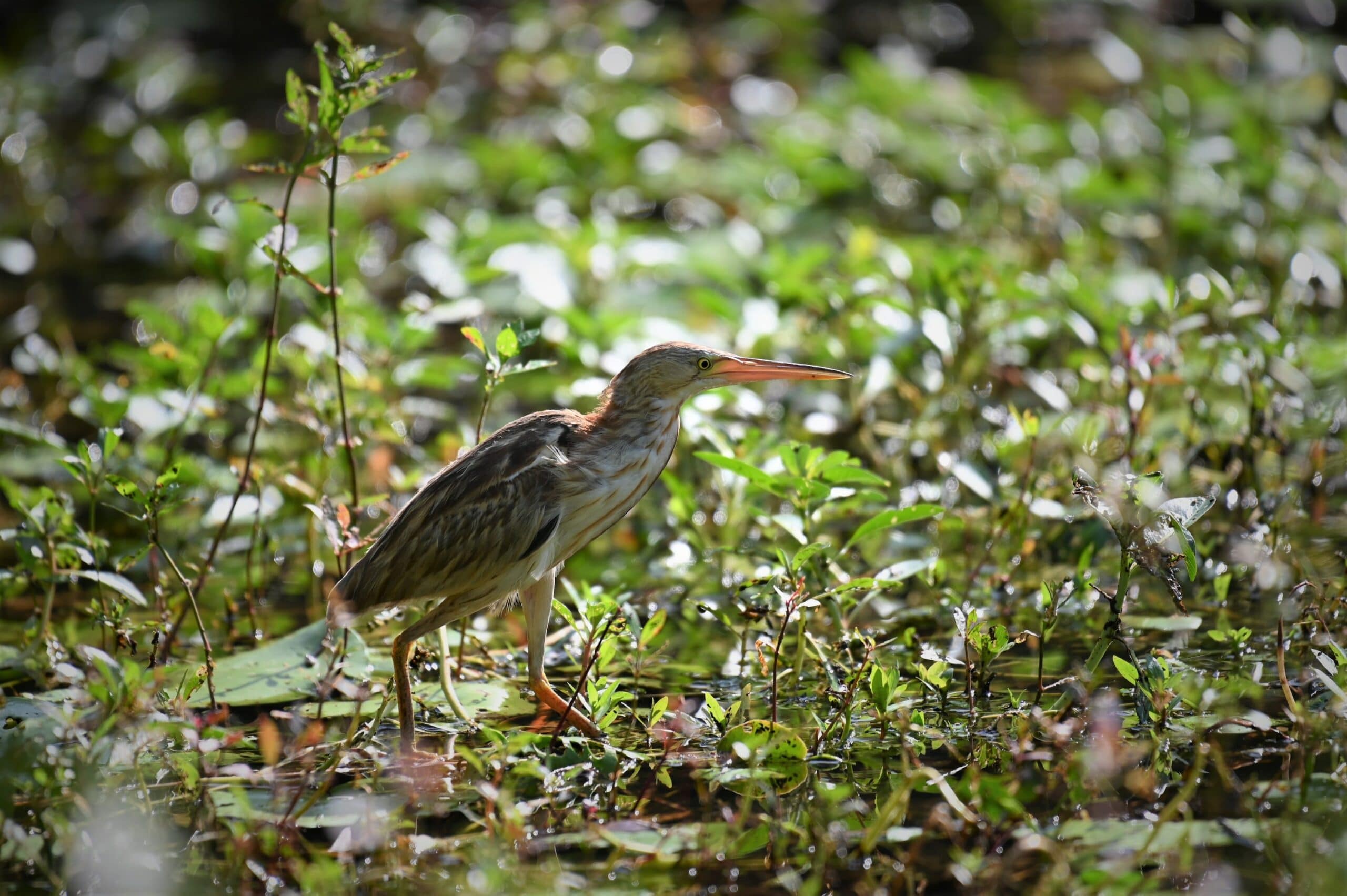
Insights: Wetlands and endangered species
Wetlands: the home of endangered frogs, waterbirds, fish and tortoises
From large flocks of waterbirds to choruses of frogs, wetlands are home to a dazzling array of wildlife. As one of the most productive ecosystems on the planet, wetlands play a crucial role supporting mammals, birds, fish, reptiles and amphibians throughout their life cycles.
However, wetlands across the world are in decline. Between 1970 and 2015 approximately one-third of the world’s wetlands were lost, significantly impacting the endangered animals that call them home.
That’s why the focus of this year’s World Wetlands Day is to take action to save the world’s wetlands from disappearing and to restore those that have been degraded.
In support of this focus, we’re taking a look at some of the precious endangered species that inhabit river floodplains, swamps and marshes across the United States and Australia.
Wetlands are a unique ecosystem that provide important habitat for many endangered species
Wetlands are a unique and important ecosystem that perform a number of roles, including:
- Preventing flood damage by slowing the flow of water;
- Improving water quality by absorbing excess nutrients and pollutants before they reach other bodies of water; and
- Playing a vital role in global food security—they have been used for thousands of years for crop production, and their health directly influences the water table.
In addition to these roles, wetlands are home to a vast array of plants and animals—many of which are endangered.
What endangered animals live in wetlands?
Many species across the world depend on wetlands for survival. For some species—such as Tiger Salamanders—wetlands are a crucial breeding ground, while for others—like the Far Eastern Curlew—wetlands are an important resting and refuelling point on long migrations. And then there are species that spend their entire lives in marshes and swamps, relying on this unique ecosystem for shelter, food and to raise their young.
Here are just a few of the endangered animals that call wetlands home.
Whooping Crane (Grus americana)
At around 5 feet tall and with a wingspan of more than 7 feet, the Whooping Crane is the tallest bird in North America. Unfortunately, it is also one of the most endangered. In the 1940s, there were only 21 Whooping Cranes left. Thanks to the efforts of conservation biologists the population has rebounded, but there are still less than 500 of these birds in the wild. Whooping Cranes depend on marshes for survival, where they nest and feed on a variety of small animals (like fish, crustaceans and small reptiles) and aquatic plants.
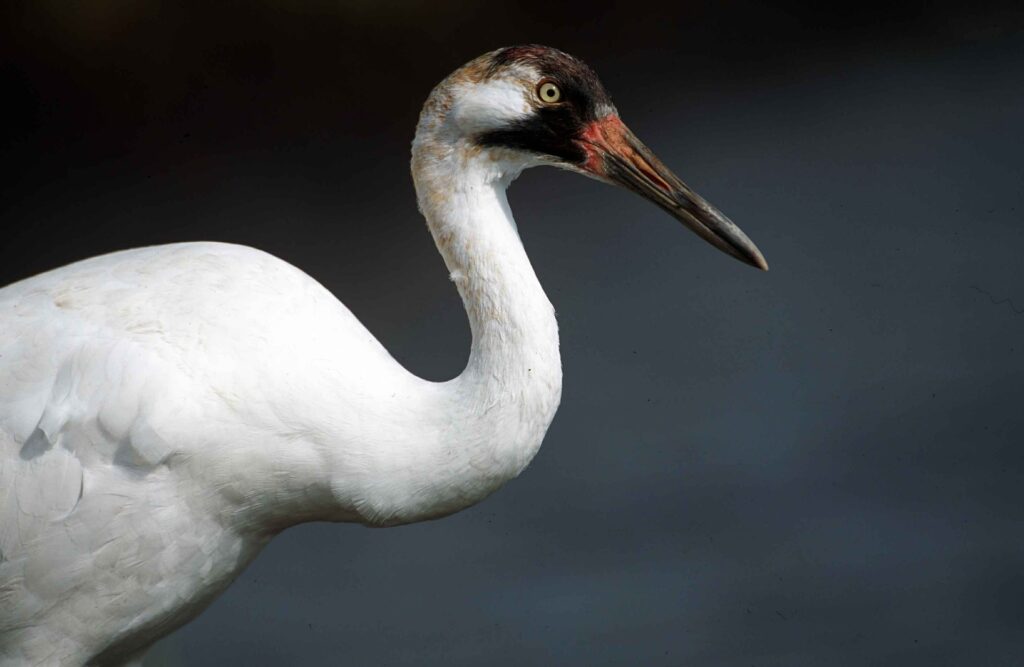
Florida Panther (Puma concolor coryi)
Native to South Florida in the United States, the Florida Panther is a critically endangered puma, estimated to have a wild population of as few as 200-300 animals. Panthers range across different habitats according to the availability of prey, but are known to occupy freshwater swamp forests, where they feed on wetland animals including marsh rabbits, waterbirds, nutrias and small alligators.
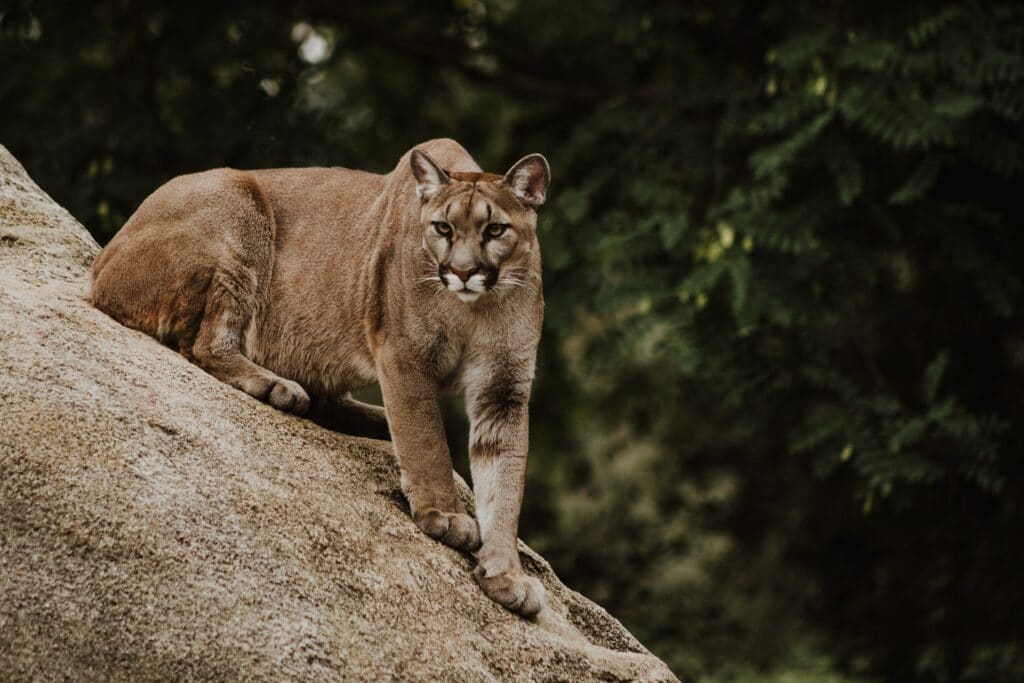
Endangered Turtles and Tortoises
Wetlands are home to numerous species of turtles and some tortoises, including the critically endangered Bog Turtle (Glyptemys muhlenbergii) which is the smallest turtle in the United States. Reptiles like turtles depend on wetlands for survival, as they spend most of their lives in or near water.
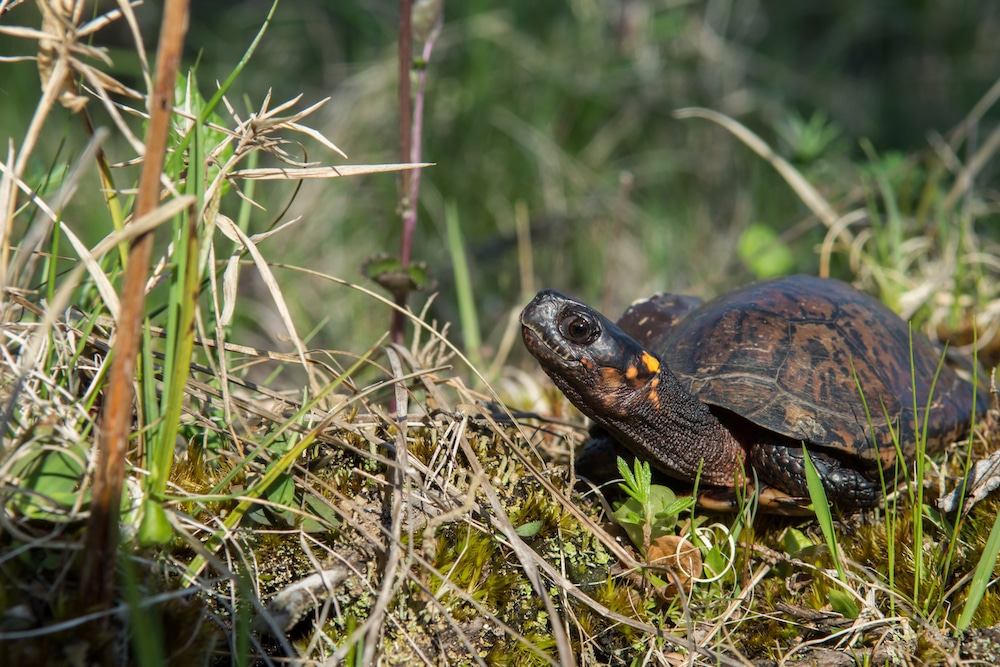
Australasian Bittern (Botaurus poiciloptilus)
Listed as Endangered on the IUCN Red List, the Australasian Bittern is a waterbird native to Australia. It is highly adapted to the shallow, freshwater wetlands it inhabits, and can be particularly difficult to spot in dense reeds—especially given their ability to stand completely still when alarmed. Unfortunately, due to habitat loss, the Australasian Bittern’s population has declined significantly in the last 20 years, and only 2,500 remain in the wild.
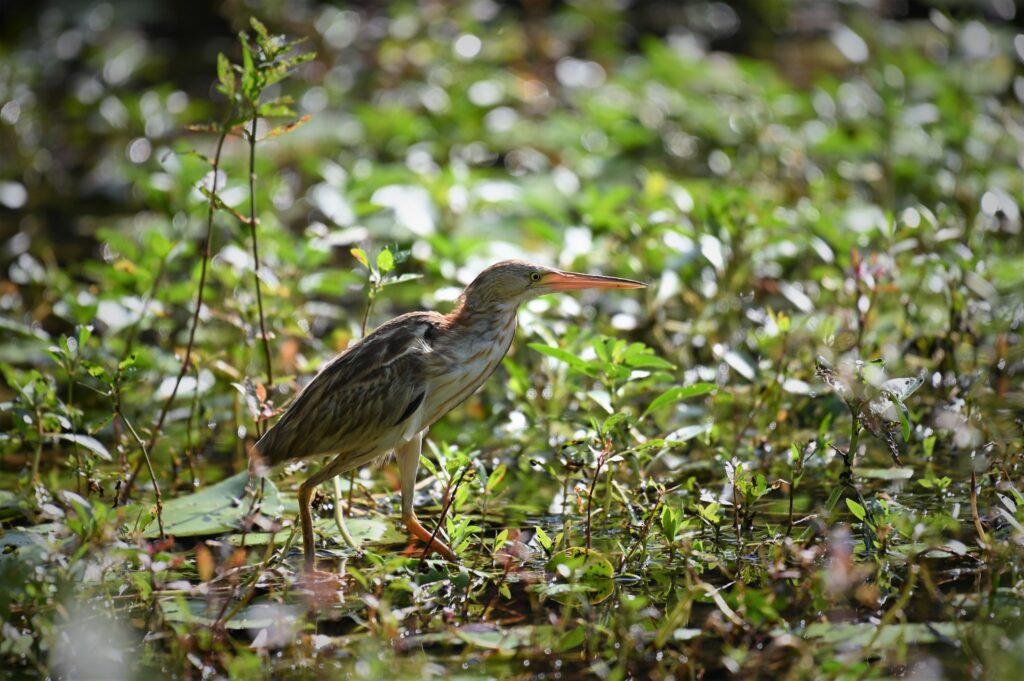
Southern Corroboree Frog (Pseudophryne corroboree)
The Southern Corroboree Frog is a tiny, bright yellow and black frog that measures between 2.5 and 3cm and is only found in the alpine sphagnum bogs of Australia’s northern Snowy Mountains. The critically endangered frogs depend on this alpine wetland habitat for survival—it is a crucial breeding ground where males and females mate in summer, and tadpoles grow over winter.
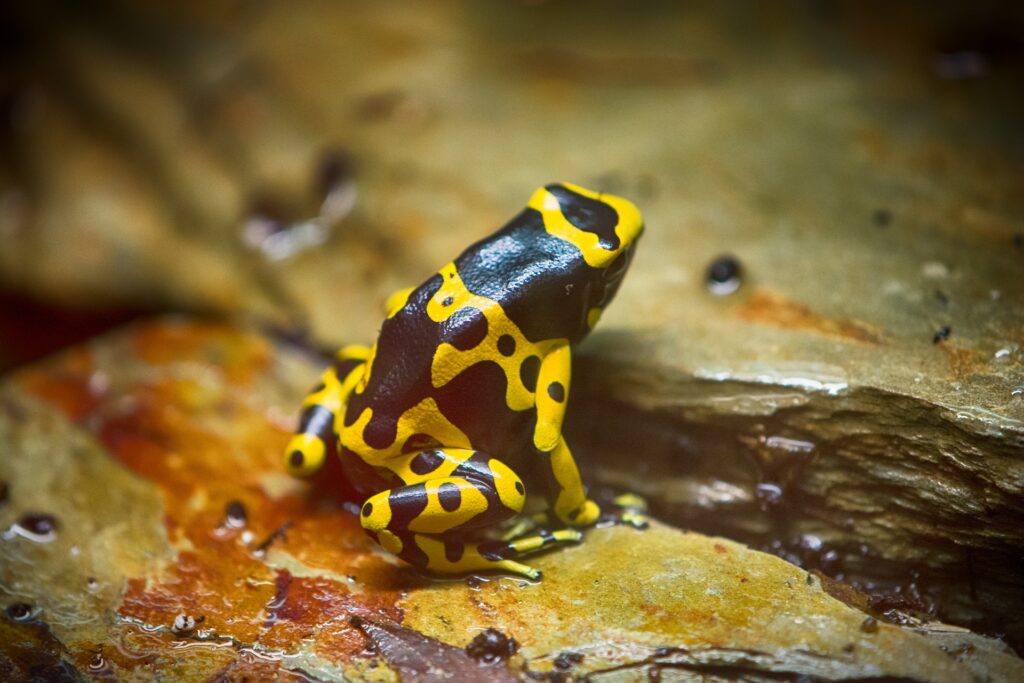
Why are these animals threatened?
Habitat loss is one of the most significant threats to these endangered species. When an animal adapts to a specific environment, it comes to depend on that environment for survival. Because of these precise habitat requirements, it can be difficult for a species to adapt quickly to a new environment, if at all.
For example, the Australasian bittern requires freshwater wetlands for survival, and will only breed in densely vegetated areas where they can build their nest over shallow water. Similarly, the decline of dragonfly populations around the world has been linked to the global decline of wetlands—without the marshes, swamps, rivers and vernal pools dragonflies have adapted to breed in, they are unable to reproduce.
The destruction and degradation of wetland habitats is driven by a range of factors, including:
- Land-use change, driven by rapid urbanisation and agricultural expansion
- Climate change, which affects temperature and precipitation levels
- The spread of diseases, and damage caused by invasive species.
These threats to wetlands promote a vicious cycle. As wetland habitat is degraded or destroyed, the organisms that depend on wetlands decline, promoting further habitat loss—the loss of even a small number of species can be detrimental to the proper functioning of the ecosystem.
How can we help to protect them?
There are many ways you can take action to help protect our wetlands and the threatened species that call them home:
- Learn more about wetlands in your area, and their plants and animals
- Take some simple steps to reduce your impact on wetlands, like conserving water, minimising the amount of chemicals you use in your home and being mindful not to let weeds, or pets escape into the wild
Donate to, or get involved with conservation action near you. For example, you could log wetland bird sightings through Birdata, or volunteer your time to undertake wetland monitoring.
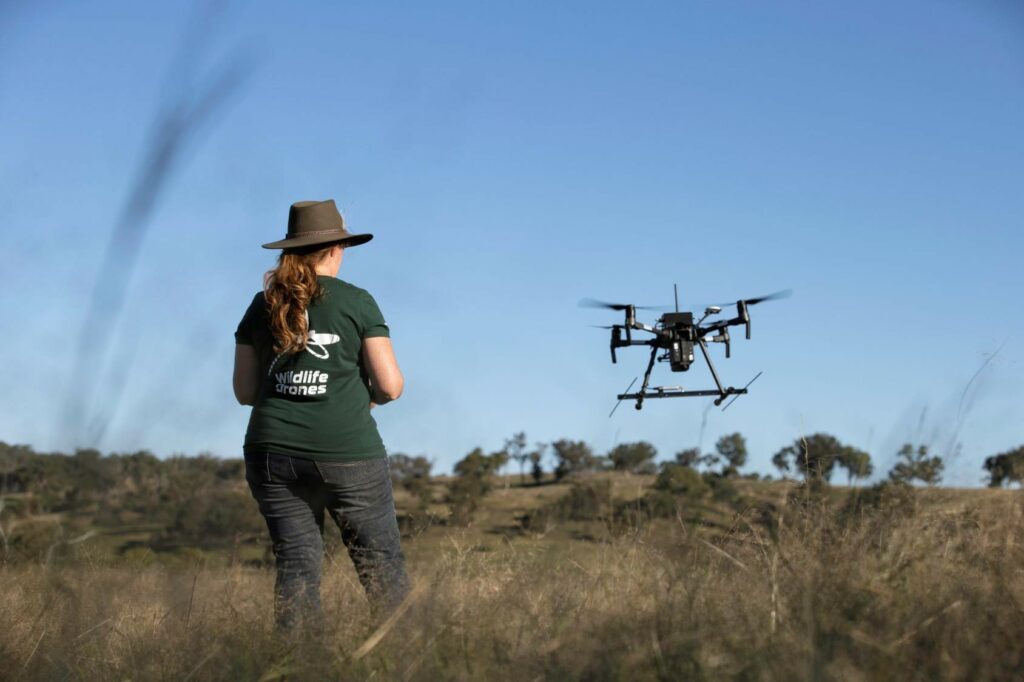
Wildlife Drones works with clients to protect endangered wetland animals
Our innovative drone-based radio-tracking technology has been deployed to assist conservation efforts for a range of endangered wetland species, including:
- Thermal surveys to trial the identification of nesting sites of Survey critically endangered Australasian Bitterns.
- Radio-tracking of Western Swamp Tortoises across otherwise inaccessible swamps. In just two days we tracked more tortoises than the team had been able to track with ground-based telemetry in two months!
Get in touch with us today if you’d like to hear more about how our world-leading technology can help you efficiently monitor endangered species across hard-to-access wetland terrain.

Alice Wisse is an experienced management consultant, freelance writer and content creator. She is an adept project manager and sharp analyst, who enjoys working with organisations to refine their strategic direction and effect positive change.

